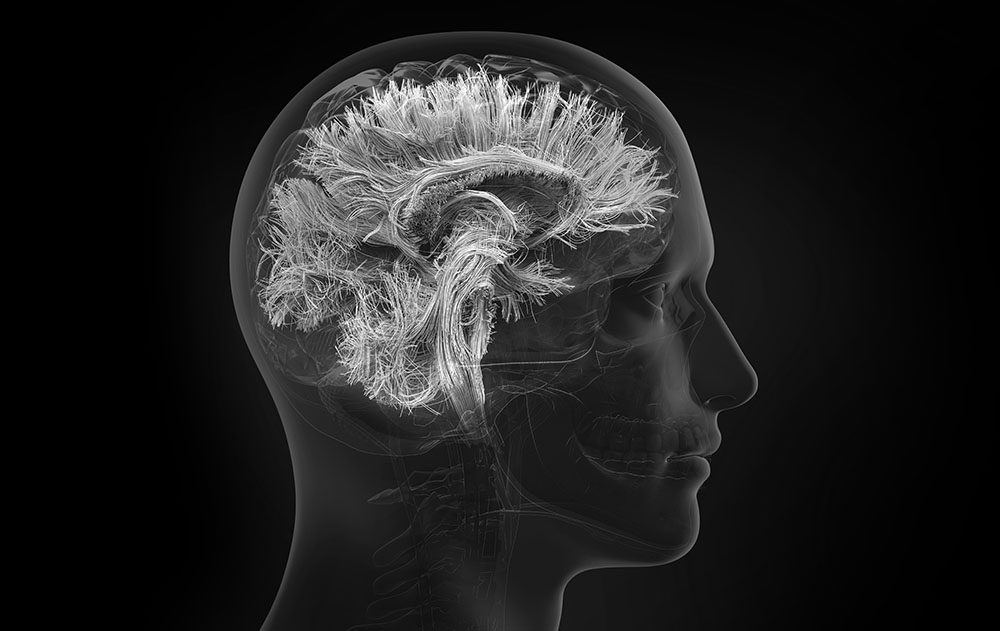Intelligence and general happiness have a strange, seemingly reverse relationship. Animals, like humans, are not happy all the time. They are continuously searching for opportunities to fulfill their needs of survival. If they succeed, they get rewarded with pleasant feelings by their brains, but if they do not, they may quickly become stressed, just like humans do. When potential threats appear, they also become stressed. However, compared to humans, they live unconsciously in the present moment. If they are not in an uncomfortable situation and they see no threats around, all their stress is quickly gone.

Not being able to think far beyond the present time is the reason why we don’t see too many chronically stressed or depressive animals. If they live in a challenging environment where they have to fight for their daily survival, they might have even more emotional roller-coaster lives than humans do. However, between two stressful events, they do not suffer from additional stress that is triggered by things that are created by their own sophisticated thinking.
The Emergence of an Intelligence That Exceeds the Limits of Being in The Present

Humans have developed a new, conscious, logical, and highly intelligent brain layer. This layer continuously analyzes and organizes our memories, and based on that, it continuously creates simulations of different possibilities for the future. This gave us an immense evolutionary advantage. We can figure out which combinations of actions will make us succeed in the future and which combinations of actions might fail. Unfortunately, this advantage came with a price. Our subconscious brain is not only reacting to what happens at the moment in front of us, but also reacting to everything that we might think about the future or the past. Besides, due to our self-awareness, we also have the ability to think about ourselves and continuously make self-judgements. If we daydream about a nice future, that might reward us with a nice mood. However, if it results in craving for things that we cannot get, or it makes us crave to be persons that we are not, that might trigger our stress responses day in and day out. Our conscious, logical brain can find endless reasons to worry about the future, regret the past, or be unsatisfied about ourselves. These self-manufactured stress triggers are the main sources of the chronic stress that we often call as human struggling.
Being Trapped in a Constant State of ‘Time Travelling’

In our modern daily work, we are barely in the present. We are continuously analyzing the past and trying to predict which actions might help us to get the results we would like to achieve. If we succeed, we immediately start analyzing again. We are also overloaded with information from the outside world through our devices. As a result of our empathetic skills, we react to everything that happens to others elsewhere more or less as if it were happening to ourselves. We may also worry about how distant events in the world might affect our own lives.
Suffering From our Memories and Imagination

Our attention is barely in the present at any time. If you look at Eastern philosophies, they have figured it out already thousands of years ago. Life was much simpler at that time, but the human mind had already been suffering from the drawbacks of its own intelligence. Buddhist and yogic teachings describe in many ways that we are not living in the present. They say that the main reason behind human suffering is that we regret the past and worry about the future. They also say that we should bring our attention to the present. We should stop craving for things that we do not have and stop craving to be someone who we aren’t. Of course, it is not easy to do so. Fortunately, by following the ‘scientific path of enlightenment,’ which means better understanding the nature of our subconscious mechanisms, there is a another way to resolve our inner conflicts.
Recognize Your Subconscious Brain’s Good Intentions Whenever It Decides to Make You Feel Bad
Stress mechanisms always serve the same purpose. Your subconscious mammalian brain gives you an unpleasant, tense feeling of urgency to immediately do something to avoid danger, solve problems, or find a way to get what you desire. Although stress may feel very bad, the intention of your subconscious behind it is always good. In this way, it tries to help by stimulating you to take immediate action that leads to a positive resolution.
If you start thinking about stress this way from now on every time you experience it, you will realize that in reality there are no good and bad emotions, only emotions that make you feel good or bad. Your subconscious brain always wants to help you by giving you the feelings that it ‘thinks’ will serve you the best. Actually, it’s a real hero, because it always suffers with you together for the good purpose. Once you understand this, then you have taken your first and most important step on the ‘scientific path of enlightenment’ and self-healing.
Stress Was an Excellent Universal Solution In the Past

Animals rarely encounter complex problems. Therefore, in our mammalian past, stress served as an excellent universal solution. If we couldn’t resolve our problems through immediate action, stress made us feel so bad that we moved away. We could only crave things that were right in front of our eyes, and if we couldn’t obtain them, stress helped us give up. When we walked away, our bad feelings disappeared.
Your Subconscious Brain Does Not Yet Have a Better Solution Than Stress for Modern-Day Challenges

Unfortunately, most of the things that cause us stress in modern times cannot be solved through immediate actions or by simply walking away. Therefore, many times our stress responses cannot achieve their intended purposes. Because our mammalian brain simply doesn’t have a better solution in its default programming, it may keep us under stress permanently. As a result, neurochemicals which are responsible for our stress responses are released too often and in too high quantities in our brain and body almost every day. At the same time, the activity of neurochemicals that are supposed to keep us in positive moods decreases. Therefore, we may initially experience unpleasant, tense feelings, reduced attention, and lower productivity. In the long term, however, if nothing changes structurally, more serious effects may inevitably arise, such as chronic depression, burnout, and painful failures in life.
You Can Update the Default Programming of Your Subconscious Brain to Stop Responding With Stress When It Does Not Help
Obviously, trying to stop thinking about the past and the future is not a long-term solution to our problems. Nevertheless, there is nothing fundamentally wrong with desiring things that we cannot yet have or aspiring to be someone we are not yet. The real issue lies in our mammalian brain’s default programming, which responds with stress when it doesn’t lead to a solution in our situation. Therefore, this programming needs to be updated to align with our modern way of life and our increasingly complex ways of thinking. Otherwise, human struggling will never come to an end.
To Update Your Stress Responses, You Have to Understand What Neuroplasticity Is
Because we cannot simply switch off your stress responses, many people believe that it is not possible to do so. Indeed, you cannot just turn them off by default, because they are literally wired into the web of your subconscious brain. However, it is fortunately not hardwired but softwired. By streering your thoughts towards different neural pathways multiple times your brain wiring can be slowly altered.

By repetitively reconsidering how your subconscious brain should respond to a certain type of stress trigger, you can slowly unlearn its undesired responses to that trigger. When that happens, your brain literally creates new wiring that bypasses the pathways that once led to stress, towards a neutral, or even positive state of mind. If you have been afraid of something in the past and later learned not to be, you have already done it intuitively. This process is what scientists call neuroplasticity.
In the case, for example, when you are worrying too much about the future, you can remind yourself that your emerging bad feelings are only occurring because your subconscious brain cannot distinguish the imagined threat in the future from a threat in the present. It thinks that you are already in danger and tries to force you to take immediate action to remove that threat or make you feel hopeless enough to walk away from it. However, because you cannot take immediate action, nor can you walk away from your imagination, the stress your subconscious tries to use to save you can never fulfill its purpose.
By Practicing Neuro-Reflective Thinking, You Can Unlearn Your Subconscious Brain Keeping You Under Stress, When That Stress Cannot Reach Its Purpose

You can begin a mental conversation with your subconscious mammalian brain. At first say thanks for the good intentions behind your stressful, worrying or depressed feelings, but make it also clear that it will not help in your situation. Then propose that it should actually make you feel motivated, energetic, positive, and creative. This state of mind would help you the most to survive the best, and tackle your challenges in any situation.
Probably, with this way of thinking, you will not immediately convince your subconscious brain to make you feel so positively. However, it will very likely prevent you from becoming completely absorbed in your troublesome thoughts. By putting yourself in the role of the conscious observer of such mental states and not merely the victim of them, your negative thoughts will decrease and gradually dissolve.
When you practice this kind of thinking, which we call ‘Neuro-Reflective Thinking’, you can effectively rewire your subconscious brain to unlearn responding with stress when it does not help you. While doing so, you develop a higher consciousness that will stand outside your mental states. You literally program some of your brain cells, to become independent obervers of your mental processes, and they will start to influence your subconscious brain’s responses stronger and stronger in the direction that you decide for yourself.
The more you repeat this kind of neuro-reflective thinking, the better it will work. Mentally resilient people, who say, ‘I don’t stress because it doesn’t help,’ have intuitively developed this awareness and already rewired their brains. If you understand that most of your stress is only the result of your outdated neurologic programming conflicting with your intellect, it becomes easier for you to do the same.
The More You Understand the Nature of Your Stress Mechanisms, the Easier You Can Rewire Your Subconscious Brain to Respond in Better Ways

If you investigate deeper, you’ll find that almost all problematic patterns of human behavior emerges from the subconscious brain, when its default mammalian programming fails to respond properly to our modern-day challenges and inner dilemmas. Fortunately, if you learn more about why you have these mechanisms, and how they exactly work, you can much easier develop the skills to consciously rewire your brain to bypass them.
Using neuro-reflective thinking and other neuroscientific methods, you can gradually train your subconscious mind to stop responding with stress in any situations when stress cannot provide a solution. You can free yourself from conflicts between your conscious thinking and your default neurological programming and eliminate all drawbacks of your intelligence. If you want to learn more about how to do it in the most efficient ways, keep reading our upcoming new articles and follow us on social media.
